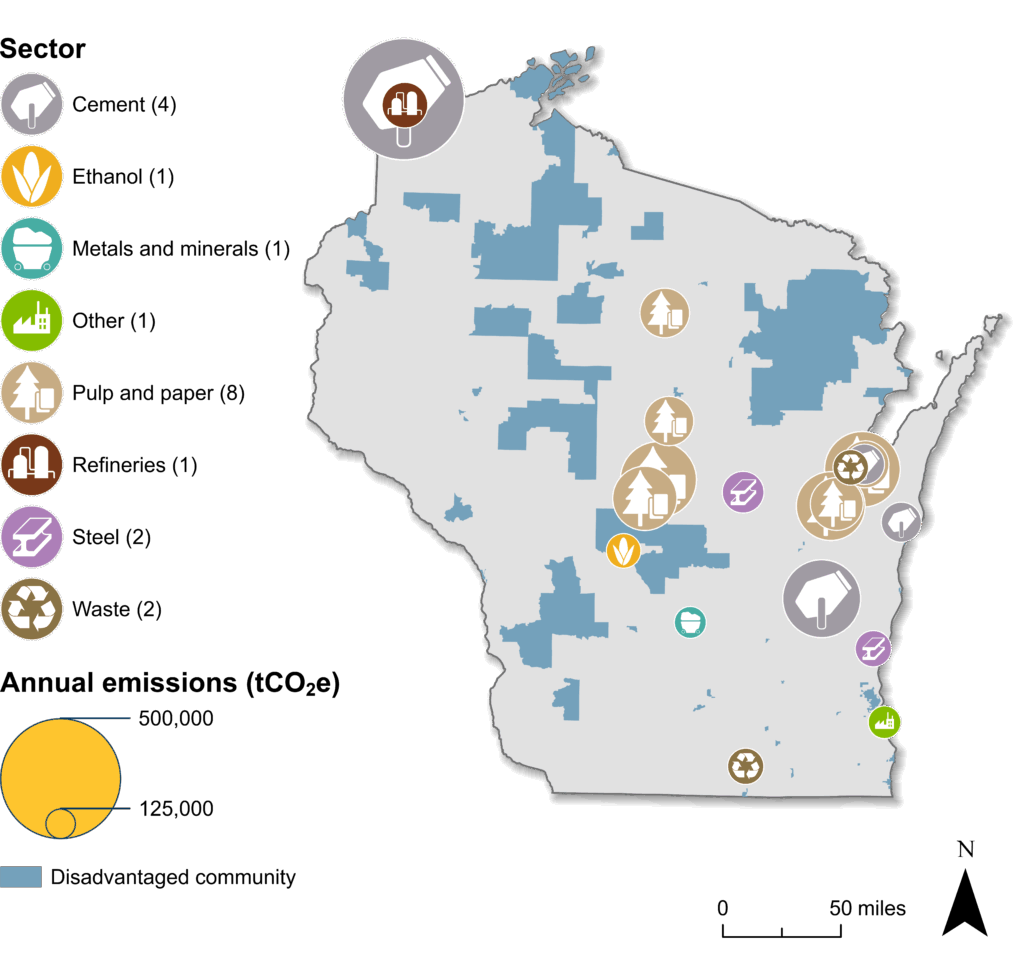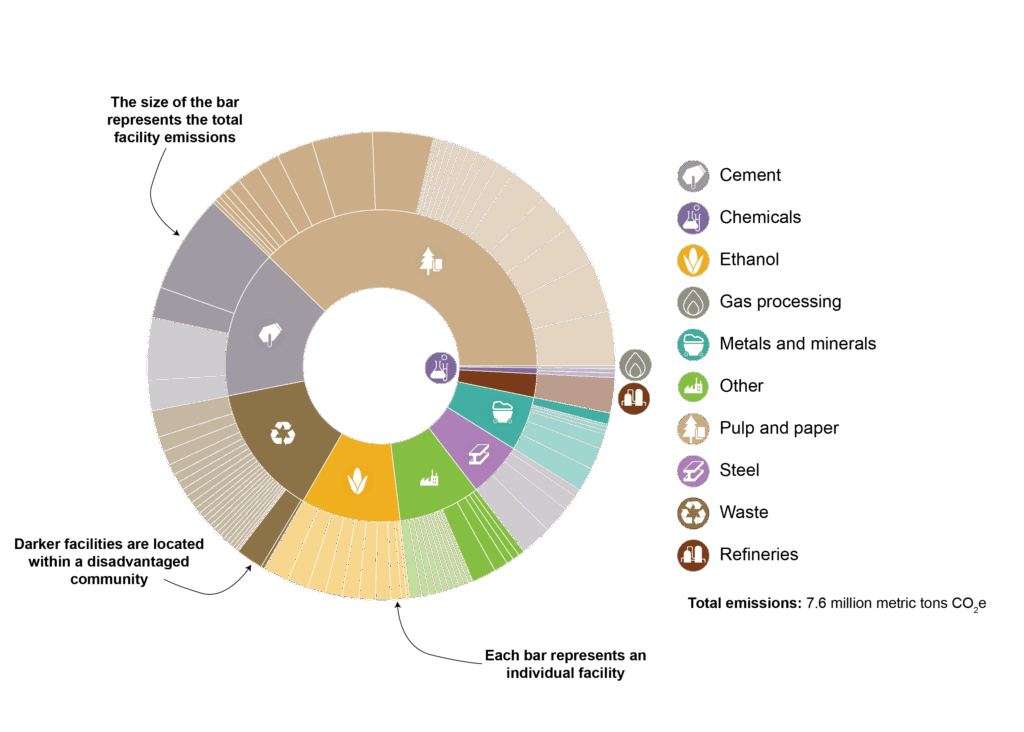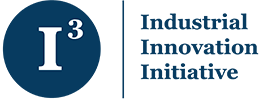Wisconsin
Four sectors account for a large share of Wisconsin’s industrial emissions: minerals, waste, miscellaneous combustion (primarily ethanol and food production), and pulp and paper. Reflecting its long history of logging, the state remains a major pulp and paper producer, accounting for more than seven percent of nationwide emissions attributable to pulp and paper production. Industry is primarily concentrated in southeastern Wisconsin and the Fox River Valley. There are also industrial clusters in the western cities of La Crosse, Eau Claire, and Superior.

- The top 20 emitters are shown on this map, coded by industrial sector. The size of the circles corresponds to emissions: the larger the circle, the higher the emissions.
- Disadvantaged communities (as determined by the federal government) are shaded blue.

- The inner circle provides a visual representation of the share of emissions generated by each industrial sector.
- The outer circle also indicates the share of a sector’s emissions generated in disadvantaged communities.
STATE ENERGY POLICY:
Considering a state’s broader energy policy landscape is helpful when developing policies to support industrial modernization. Wisconsin has executive greenhouse gas emissions targets and an executive electricity portfolio standard. Wisconsin has not established a clean heat standard. While these formal commitments are not prerequisites for innovative industrial policy, they can provide a supportive framework. In addition, streamlining permitting and establishing an efficient, transparent appeals process that engages local communities early while giving clarity and assurances to project developers are key components of effective state energy policy. Discussions around innovative industrial policy present an opportunity for broader conversations about state energy policy to ensure a mutually reinforcing strategy.
LEGISLATIVE context & opportunity:
Let us know if you are aware of additional legislation advancing industrial innovation in Wisconsin that should be featured. The context below is not exhaustive and serves as an example of recent policies and programs and where there may be future opportunities:
- Midwest Alliance for Clean Hydrogen (MachH2): Wisconsin and five other states are part of the Midwest Alliance for Clean Hydrogen. Independent of the outcome of the regional hubs, there is strong interest in building a clean hydrogen economy in the region.
- Clean Energy Plan Progress Report: In 2024, the Office of Sustainability and Clean Energy updated the 2022 Clean Energy Plan, which identifies four key pathways to address emissions and maximize the benefits of the clean energy economy, including modernizing buildings and industry by addressing building codes, supporting electrification, expanding funding, and supporting industry and businesses in their transition
- A factsheet by the Renewable Thermal Collaborative identifies electrification of Wisconsin’s pulp and paper, plastic and recycling, and container glass subsectors as opportunities to reduce emissions significantly.
Explore recent legislation in Wisconsin and all 50 states by clicking on a specific year: 2025 legislation, 2024 legislation, 2023 legislation.
